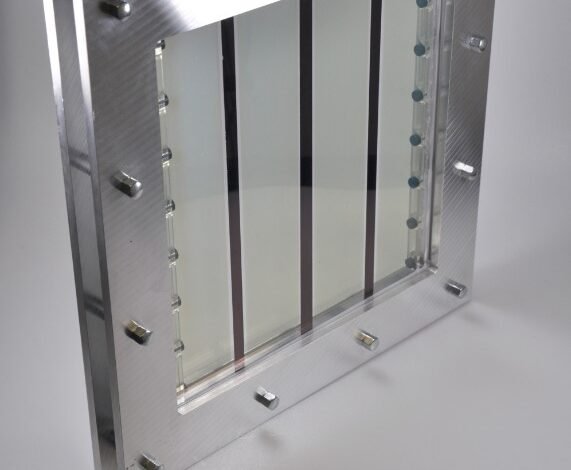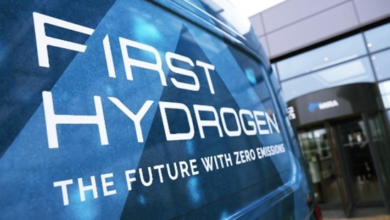Fraunhofer experts developed a tandem module to produces green hydrogen from solar energy

In the Neo-PEC joint project, researchers from three Fraunhofer Institutes have developed a modular solution that enables highly flexible hydrogen production and supply using solar energy.
The core of the Fraunhofer development is a tandem PEC module. It is similar to its classic photovoltaic counterpart – with one crucial difference: the electricity is not generated to later electrolyze it elsewhere. The entire process takes place in the same unit. Caution is required here: Since hydrogen and oxygen are produced in the process, the structure must be designed in such a way that these elements are produced and remain strictly separate from one another.
For the tandem cell, the experts coat commercially available float or flat glass with semiconducting materials on both sides. When exposed to sunlight, one side of the module absorbs the short-wave light. At the same time, the long-wave light penetrates the upper glass layer and is absorbed on the reverse side. In the process, the module releases hydrogen on the reverse or cathode side and oxygen on the upper, anode side.
Over the three-year duration of the project, the Fraunhofer scientists researched and developed high-purity semiconductor materials, which they applied using particularly gentle coating processes. This enabled them to increase the hydrogen yield of the process.
“We build nanometer-thick layers on the glass via the gas phase. The resulting structures have a major influence on the reactor activity, in addition to the actual material properties, which we have also optimized,” explains Dr. Arno Görne. The photovoltaic elements linked in the module supply the system with additional voltage: It acts like a turbo that accelerates the activity and further increases the efficiency.
The result is a reactor with an active surface area of half a square meter. Separated from the oxygen, it produces hydrogen, which can be immediately captured and quantified. Currently, a single module produces over 30 kilos of hydrogen per year per 100 square meters in European sunlight. With this yield, a hydrogen car could, for example, travel 15 to 20,000 kilometers.
The project is also a successful example of cross-institutional cooperation and the combination of complementary Fraunhofer competencies: As part of the project, which has now been completed, Fraunhofer IKTS researched materials and processing for the photoactive layer. Colleagues from the Fraunhofer Institute for Surface Engineering and Thin Films IST contributed their experience in large-area coating using physical vapour deposition. The reactor design, the inexpensive and reliable production and the subsequent evaluation of the modules were in the hands of the experts from the Fraunhofer Center for Silicon Photovoltaics CSP.
The project partners have already proven in numerous field tests that the module and the interconnection function stably and smoothly. But the Fraunhofer teams, who successfully presented their reactor for the first time at the Achema 2024 trade fair in Frankfurt in June, have long been planning the next steps: On the one hand, they aim to continue their successful institute collaboration in a follow-up project, and on the other hand, they plan to further develop their solution in various directions in cooperation with companies – for direct, safe and efficient decentralized hydrogen production and supply.
